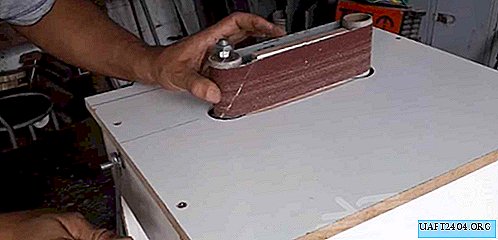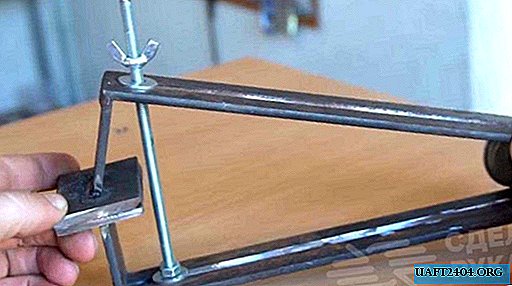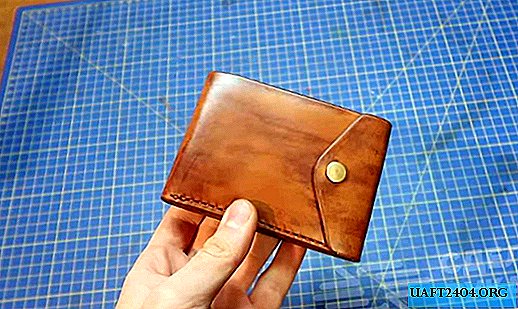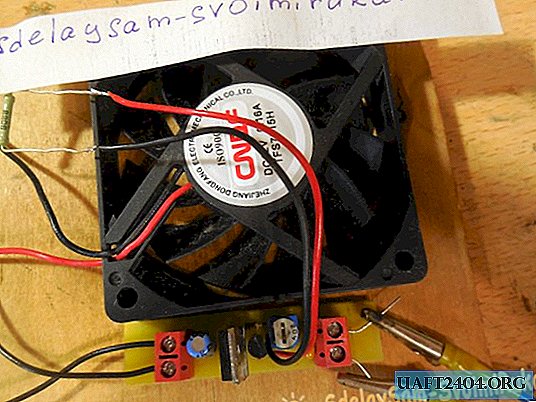Share
Pin
Tweet
Send
Share
Send

Essential inventory and recipe
In order to bake bread you will need:
- a container for kneading dough with a volume of at least 1.5 liters;
- tablespoon;
- knife;
- rolling pin;
- parchment paper;
- a baking sheet;
- silicone brush for greasing a baking sheet;
- baking dish (if there is, if not - you can without it);
- board for the test;
- sieve for sifting flour;
- a very sharp knife or a dangerous blade for curly cutting dough.

The recipe is designed for one portion of bread weighing 450 g. If the specified amount of dough is divided into 2 parts, you get small bread and a French loaf weighing 225 g.
The following ingredients will be required for the test:
- 400 g of wheat flour (8 tablespoons with a hill);
- 200 ml. warm water (can be replaced with milk);
- 1 teaspoon without a slide of table salt;
- 1 tablespoon of sugar and refined vegetable oil;
- 1 chicken egg;
- 15 g of dry or alcoholic yeast.
The step-by-step process of making bread in the oven
1. Warm water is poured into the bowl, the yeast is placed and the liquid is mixed until the yeast is completely dissolved.

2. When the yeast has dissolved, sugar is added to them. Stir again. Sugar helps start the fermentation process. When the sugar has dissolved, salt and vegetable oil are added.

3. A room temperature egg is broken over a bowl.

4. All ingredients are mixed until smooth.

5. Pour a third of the flour into the mixture. Before this, 400 grams are measured using scales, a measuring glass or a tablespoon. The entire volume is sifted twice. So that the flour is enriched with oxygen and helps the dough to rise.

6. Flour and spoon mix in a bowl with other ingredients. A creamy mass is obtained.

7. The remaining flour is visually divided in half. Pour one part into a bowl, continuing to knead the dough with a spoon.

8. The dough to the touch is still sticky and not quite thick. This is a semi-finished product that needs to be given a first time lift. To do this, cover the container with a cotton towel, put next to the included oven for half an hour. In warmth and silence, the dough rises, increasing in volume.

9. After 30 minutes, remove the towel. Add the remaining flour to the dough.

10. The dough is kneaded with hands. With one hand, rotate the bowl in a circle, with the fingers of the other hand, separate the mass from the walls of the bowl, directing it to the center. Continuing to rotate the bowl, the dough is collected from the edge to the center, using the fingers and wrist. The mass is formed into a plastic ball. Cover with a towel, let go in a warm place for another 40 minutes.

11. When the mass doubled, air bubbles appeared in it, the towel was removed. From the dough you can form bread.

12. The board is sprinkled with flour. Dough is laid out from a bowl on a board.

13. With light movements, as if effortlessly, the edges of the fingers are directed to the center and pressed against the wrist. At the same time, with the other hand, rotate the workpiece. When the lump stops sticking to his hands, a ball is rolled from it.

14. If you plan to bake an ordinary large loaf, then at this stage the dough can be shifted to a baking dish, put in a warm place for 20 - 30 minutes to stand and bake. If you plan to bake a small bread and baguette, then the ball needs to be cut in half.

15. One half to knead and put in a bowl. The second is to give an oval shape, shift into a rectangular shape for baking, make the notches with a sharp knife or blade. Cover and clean closer to the oven to rise.
You can’t immediately put the bread in the oven, it must definitely come up. Only in this way it will be baked, gain a light, airy crumb.

16. If there is no round or rectangular shape for baking, you can bake a loaf on a regular baking sheet. To do this, the remaining part is rolled out with a rolling pin into a rectangular layer (about 1 cm thick)

17. The surface is lubricated with vegetable oil with a brush. The edges of the formation overlap each other.

18. The folded layer is again rolled into a rectangle, the surface is oiled, the dough is overlapped and folded. After repeating the process three times, the rectangle is twisted into a roll, the edges are plucked. The loaf is rolled out by hand, giving the shape of a long baguette. From above, oblique notches with a blade are characteristic of the loaf. The baking sheet is covered with parchment, greased with oil and sprinkled with flour. After that, put a loaf on it, cover it and let it go for half an hour.

19. When the bread rises, it is carefully placed in a hot oven. The temperature of the first 10 minutes should be high - approximately 210 - 220 degrees.

20. After 10 minutes, the metal surface of the oven is sprayed with water to form steam. Steam will settle on the surface of the bread, forming a beautiful crust. The temperature is lowered to 180 degrees and another 25 to 30 minutes are baked.

21. When the baking is ready, the oven is turned off. The door is opened, letting in cold air. Letting the hot bread stand for 5 minutes in an open oven, it is removed and transferred to the wire rack.

22. Ready buns can be sprinkled with chopped parsley, dill and garlic.

Share
Pin
Tweet
Send
Share
Send











